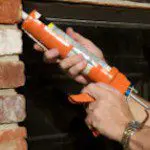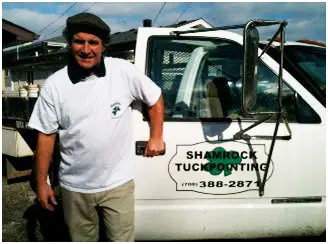
1. There’s value in knowing when you can hold off on a tuckpointing or caulking repair and when you can’t. You want a contractor who will give you the straight scoop – and will tell you when you can hold off on a brick repair and when you can’t. A contractor you trust is one who understands your budget and presents solutions.
2. There’s value in maintaining your brick building, because neglected repairs can get costly. A trusted contractor can help you keep an eye out for early warning signs of mortar cracking or brick deterioration. That saves you money.
3. When it rains it pours. There’s value in knowing you will be at the top of the contractor’s list when you need an urgent repair. Heavy rains after a harsh winter can sometimes yield a flurry of calls from customers experiencing leaks. Do you want to be on someone’s waiting list or dealing with an unproven contractor when you have an urgent need.
At Shamrock Tuckpointing we appreciate building owners who are interested in building a relationship. We’ve been in business more than 30 years, and are fully insured and bonded. We respect our customers budget concerns and have a long list of happy property managers and commercial building owners.
Let us prove we belong at the top of your Go-To List.
We’ve seen a number of moisture issues appearing on relatively new commercial shopping centers recently and the culprit has been failed caulking. It serves as an important reminder to building owners and property managers that while caulking is a small part of a structure, it plays an important role in keeping a building watertight. Both new and old buildings can be vulnerable to failed caulking.
The wrong caulking or improperly applied caulking is a major cause of moisture problems. Moisture stains are a sign that the caulking has failed. Look below windows or near the roof line. Windows and roofs are especially prone to water penetration. By conducting regular inspections and paying attention to minor repairs, building owners can avoid major repairs down the road.
Reasons for Caulking Failure
Sometimes shoddy construction can lead to a leaky facade. In the rush to finish a job or faced with inadequate supply, a contractor might use whatever caulking is on hand, rather than what was specified. Use of the wrong sealant with masonry and concrete can cause discoloration, stress on concrete or even spalling.
In other cases, joints that are too narrow or wide can cause the caulking to fail. If the joints are too narrow, the expansion of the substrate can cause the joints to close too much and extrude the sealant. Later when the building contracts, the caulking is no longer in the joint. If a joint is too wide (more than one or two inches, depending on the sealant), the sealant may sag out of it.
Misapplication may also be due to weather. Brick or masonry must be completely dry to get proper adhesion with caulking. Applying when moisture is present causes the sealant to lose viscosity. It is too thick to properly tool. Similarly, applying caulking when it’s too hot can cause the sealant to sag or even flow out of the joint.
At Shamrock Tuckpointing we take caulking seriously. With careful selection of the proper sealants for the job and application, we make your commercial building watertight.
06 Oct 2012
Why Masonry Caulking Can Fail

Problem 1: Caulking Doesn’t Adhere
If the surfaces are not properly cleaned prior to the application, or joints are not cleaned out and tooled, the sealant may not adhere properly to the surfaces. Problems can emerge days, weeks or even months after the application.
Problem 2: Tears or Cracks in the Caulking
Poor joint design can result in tears within the caulk itself. Generally the design will call for a foam backer rod, or a specified ratio of width to thickness as well as proper tooling of the joints.
Problem 3: The Installer Misses a Spot
Caulking is subject to human error. Even a small break in the caulk can result in a leak.
Problem 4: Caulking Is Under Water
Constant exposure to water will cause caulking to fail prematurely. A professional tuckpointing contractor or building professional can diagnose structural issues which result from improper drainage. For example, a window sill or porch sloped the wrong way can keep caulking permanently wet.
Problem 5: Caulk Incompatibility
Sometimes different materials just don’t like each other. In certain situations, the caulk can react to another material that is present or to a substance used as a cleaner. It’s important to follow the manufacturer’s directions explicitly.
Because failures do occur, it’s important to check caulking regularly. And while caulking appears to be a simple task, the problems above demonstrate it can actually be quite complicated. A professional installation ensures the right materials, tools and techniques will be used to keep a tight seal for many years to come.
Not sure if you need new caulking? Give us a call.


